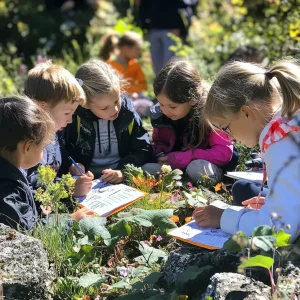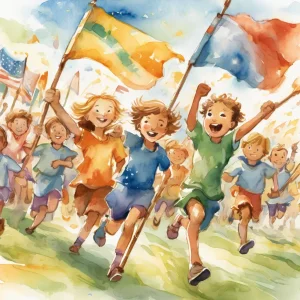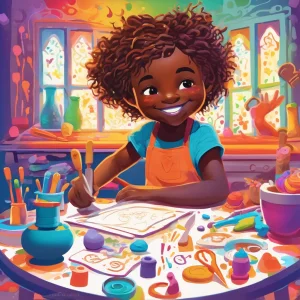Activity
Similar Activities
Nature Quest: Explore, Learn, and Respect
Children’s Age: 10–15 years
Activity Duration: 0.5 – 1 hours
The Nature Scavenger Hunt activity is designed to help children aged 11 to 15 develop morals, academic abilities, and a love for nature. Prepare by gathering supplies like lists, p…
Activity Duration: 0.5 – 1 hours
Whispering Leaves: A Nature Dance Tale
Children’s Age: 6–10 years
Activity Duration: 20 – 30 minutes
Explore the "Nature Dance Story Circle" activity for children aged 6 to 10, focusing on communication, ecology, and values. Create a safe, spacious setting with a blanket and natur…
Activity Duration: 20 – 30 minutes
Cultural Sports Relay: Unity Through Diversity Adventure
Children’s Age: 10–14 years
Activity Duration: 20 – 30 minutes
The "Cultural Sports Relay" activity fosters moral development, teamwork, sportsmanship, and cultural understanding in children. It requires an open space, markers for the relay co…
Activity Duration: 20 – 30 minutes
Whispers of the Forest: Exploring Natural Disasters Through Technology
Children’s Age: 8–12 years
Activity Duration: 45 minutes
Explore how technology can help understand and mitigate natural disasters with the "Exploring Natural Disasters Through Technology" activity for children aged 8 to 12. Using laptop…
Activity Duration: 45 minutes
Enchanted Tales: Move and Talk Story Time
Children’s Age: 3–4 years
Activity Duration: 5 minutes
"Move and Talk Story Time" is a delightful activity tailored for children aged 36 to 48 months, combining physical movement with language development. The goal is to boost flexibil…
Activity Duration: 5 minutes
Animal Feast Adventure: A Whimsical Feeding Frenzy
Children’s Age: 5–8 years
Activity Duration: 10 – 25 minutes
An interactive activity where children feed toy animals with pretend food, promoting communication skills and adaptive development.
Activity Duration: 10 – 25 minutes
Enchanted Melodies: The Musician Money Mystery Game
Children’s Age: 9–12 years
Activity Duration: 10 minutes
An engaging activity where children learn about probability and famous musicians while earning money for clues in a mystery game.
Activity Duration: 10 minutes
Bridge Builders: Eco Teamwork and Critical Thinking
Children’s Age: 8–9 years
Activity Duration: 10 – 25 minutes
An eco-conscious activity where children build bridges using popsicle sticks and tape to support toy cars, promoting teamwork and environmental awareness.
Activity Duration: 10 – 25 minutes
Magical Playdough Making and Sensory Adventure
Children’s Age: 0 month – 6 years
Activity Duration: 10 minutes
Let's make homemade playdough together! It's a fun sensory activity that helps children explore different textures and colors while developing their muscles and creativity. Gather …
Activity Duration: 10 minutes
Sensory Exploration Journey: Household Items Adventure
Children’s Age: 0 month – 6 years
Activity Duration: 10 minutes
Let's explore different textures and shapes using household items! Find a big container and items like a wooden spoon, silk scarf, plastic cup, sponge, and cotton ball. Sit togethe…
Activity Duration: 10 minutes
Holiday Parade: Musical Social Skills Celebration
Children’s Age: 2–3 years
Activity Duration: 15 minutes
Get ready for the Holiday Music Parade! This fun activity is perfect for 2 to 3-year-old kids to enjoy music, march in a parade, and have a blast with holiday props. You'll need mu…
Activity Duration: 15 minutes
Cultural Photo Exploration: World Wonders Journey
Children’s Age: 6–10 years
Activity Duration: 20 minutes
Embark on the "Cultural Photo Exploration" activity to boost children's play skills, cultural awareness, and academic development through an outdoor photography journey. Choose a d…
Activity Duration: 20 minutes


























